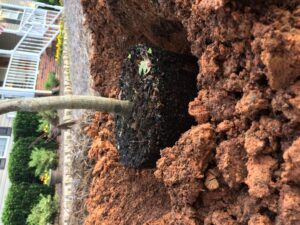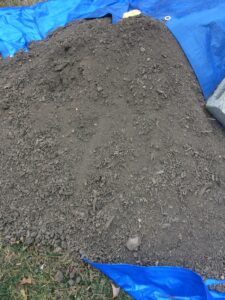Plant Health Alert – Improving Clay Soils for Better Gardens
go.ncsu.edu/readext?875325
en Español / em Português
El inglés es el idioma de control de esta página. En la medida en que haya algún conflicto entre la traducción al inglés y la traducción, el inglés prevalece.
Al hacer clic en el enlace de traducción se activa un servicio de traducción gratuito para convertir la página al español. Al igual que con cualquier traducción por Internet, la conversión no es sensible al contexto y puede que no traduzca el texto en su significado original. NC State Extension no garantiza la exactitud del texto traducido. Por favor, tenga en cuenta que algunas aplicaciones y/o servicios pueden no funcionar como se espera cuando se traducen.
Português
Inglês é o idioma de controle desta página. Na medida que haja algum conflito entre o texto original em Inglês e a tradução, o Inglês prevalece.
Ao clicar no link de tradução, um serviço gratuito de tradução será ativado para converter a página para o Português. Como em qualquer tradução pela internet, a conversão não é sensivel ao contexto e pode não ocorrer a tradução para o significado orginal. O serviço de Extensão da Carolina do Norte (NC State Extension) não garante a exatidão do texto traduzido. Por favor, observe que algumas funções ou serviços podem não funcionar como esperado após a tradução.
English
English is the controlling language of this page. To the extent there is any conflict between the English text and the translation, English controls.
Clicking on the translation link activates a free translation service to convert the page to Spanish. As with any Internet translation, the conversion is not context-sensitive and may not translate the text to its original meaning. NC State Extension does not guarantee the accuracy of the translated text. Please note that some applications and/or services may not function as expected when translated.
Collapse ▲Clay soils are prevalent throughout the southeastern United States. Clay is one of the three soil particles including sand and silt. Clay is the smallest of the particles.
Since clay particles are so small, they tend to get packed tightly together. This ‘compacted soil’ is detrimental to plant health. Loose soil allows roots to maneuver freely and access nutrients and water. Compacted soils inhibit root growth.
Clay soil is often highly leached due to rain water percolating down through the soil. This soil has fewer nutrients that plants need to grow. Clay can also be acidic which binds nutrients to soil particles making even less nutritive for plants.
Improving Clay Soils
So how can gardeners improve clay soils? Adding organic matter to soil improves soil structure, helps water drain better and adds nutrients. Garden centers sell a product called ‘soil conditioner’ which is usually the most cost effective option but any compost will do.
To amend clay soil with organic matter, spread one to four inches of organic matter on the soil and work it into the top six inches. Do this over the entire planting area. Spreading the organic matter over the site will encourage roots to forage further and create a better root system.
Do not add organic matter to the planting holes of trees and shrubs. It is better to amend the area around the tree as described in the preceding paragraph then plant the tree or shrub. If you only amend the planting hole, roots have no incentive to spread. The roots will end up circling around the planting hole and eventually this could lead to girdling roots.
Organic matter will decompose and add nutrients to the soil. Decomposing organic matter can even mitigate soil acidity. However, gardeners may still need to add lime to raise pH to levels that would be healthy for plants. Utilize a soil test to determine the amounts of lime and fertilizer your plants may need.






